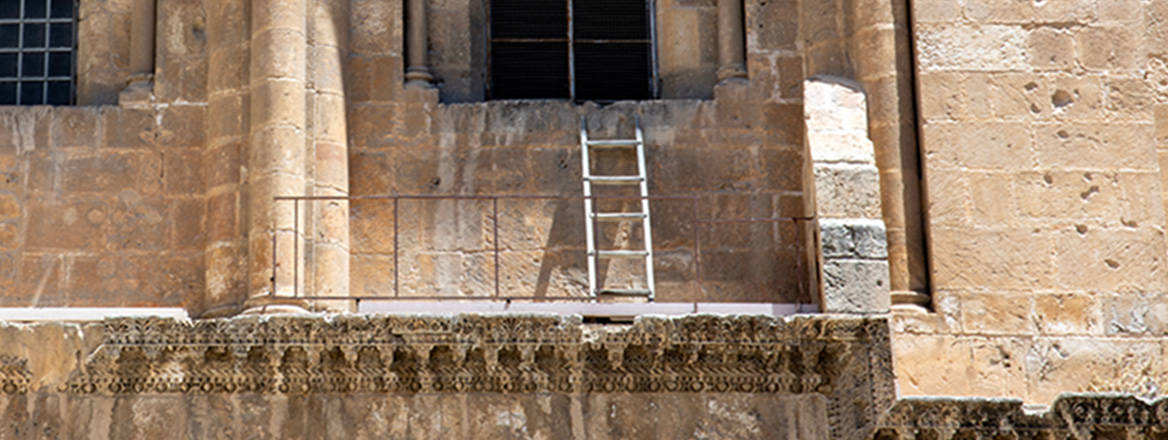Governing the Sacred: How to Resolve Conflicts over Contested Sacred Sites
This article presents five governance models for managing contested sacred sites, offering tools to help resolve conflicts while balancing religious freedom and social order.
Contested sacred sites such as the Temple Mount, the Church of the Holy Sepulchre and the Western Wall present immense challenges for any government that attempts to maintain both social order and religious liberty at such sites. In this article, I aim to succinctly present the results of research I co-conducted regarding the governance of contested sacred sites. This research led to the establishment of models, defined and presented for the first time, for governing and managing such sites. The research followed an inductive method, moving from an exploration of several such sites to the creation of overarching models, and differs from the existing literature, which often consists of intensive studies of single cases, or of deductive assumptions that are not grounded in systematic empirical observations.
Governance models such as those presented here provide analytical tools that are useful to both academics and decision-makers. Researchers can utilise these tools to understand and analyse conflicts surrounding contested holy sites worldwide. Decision-makers can employ them in their efforts to resolve or manage such conflicts effectively. By considering different governance models for contested sacred sites and evaluating their advantages, disadvantages and suitability for specific cases, effective solutions can be devised that attempt to maintain both religious freedom and social order.
Contested sacred sites such as those in Jerusalem hold immense significance for multiple religious groups, often leading to disputes and acts of violence. The practical importance of establishing peaceful governance models for such sites cannot be overstated. Until recently, no systematic attempts have been made to propose governance models in which the various attributes, advantages and disadvantages of such models are discussed.
It is suggested here that the concept of ‘thick sites’ should be reintroduced for describing contested sacred sites. A thick site refers to a location, typically religious, that carries diverse and incompatible meanings attributed to it by different groups. These meanings hold great significance, rendering the site irreplaceable.
Several key features of thick sites can be identified: the presence of different, incompatible meanings attributed to such sites by different groups, their utmost significance, and their irreplaceability from the perspective of such groups. Importantly, thick sites exist in public spaces and cannot be replaced. This means that various religious groups insist on practicing their religious activities in the same location simultaneously. Unlike the Lockean-Madisonian approach of making religious practice a private affair, where each community maintains its own place of worship, thick sites become a focal point for intense inter-religious competition regarding ownership, governance, access and other control-related aspects.
The practical importance of establishing peaceful governance models for contested sacred sites such as those in Jerusalem cannot be overstated
In our research, we aimed to address the question of how such sites can be governed by developing a description of effective governance models. To achieve this, we conducted an analysis of various thick sites, examining aspects such as property rights, access rights, and usage rights. Consequently, we were able to define five main governance models for thick sites:
- The ‘non-intervention’ model: Under this model, the state refrains from religious or substantive management of the holy site, providing services like security and cleaning without funding clergy at the site. An example is the ‘Devil's Tower’ mountain in Wyoming in the US, which holds sacred significance for around 20 Native American tribes.
- The ‘divide and separate’ model: In this model, the state divides and separates competing groups within the holy place. Division can be geographical, allocating specific parts of the site to each group, or temporal, allowing groups to pray at designated times. This bureaucratic form of separation can reduce the potential danger in highly disputed sites. An example of this model was the proposed management (which in the end was not adopted) of the Babri Masjid/Ram Janmabhoomi site in Ayodhya, India, which for a long time remained unresolved due to a long and violent dispute between Hindus and Muslims. A similar division is also seen in the Cave of the Patriarchs.
- The ‘preference’ model: One group is given priority or an advantage over others in certain aspects of place management, such as ownership rights, usage rights, or entry rights. The Western Wall serves as an example, where Orthodox Judaism holds privileged status. This is reflected in the appointment of only an Orthodox Rabbi as the Rabbi of the Wall (a governmental position), the unequal sizes of the women's and men's sections, and restrictions on access to Torah scrolls in the women's section.
- The ‘status quo’ model: This model entails maintaining an existing state of affairs from a particular point in time onwards at a given sacred site. It offers stability and prevents competitive conflicts, but may not necessarily be fair, as the existing state of affairs being ‘frozen’ can simply reflect a balance of power that existed at the temporal point of ‘freezing’. The Church of the Holy Sepulchre in Jerusalem, revered by different Christian groups, exemplifies the status quo preserved since Ottoman rule. Even a ladder placed above the entrance, currently serving no purpose, is not allowed to be moved.
- The ‘closure’ model: This model involves a ban on entering/praying at the site, either selectively for a particular group or during a specific period, or as an absolute ban. The Temple Mount is an example, where Jews are allowed to enter but not pray. Closure is a strict measure that violates religious freedom and poses challenges for democratic countries. However, in cases of significant public order concerns, its use can be justified.
Each model carries with it its own advantages and disadvantages. For example, the non- intervention model protects the religious liberty of each religious person who wishes to pray at the site, but could lead to inter-group violence if members of different groups realistically cannot tolerate the sight of others praying at the site. The divide and separate model is convenient as a bureaucratic solution that can be adopted by governments, as it is relatively easy to understand and to practice – it functions via a simple set of guidelines: from 7 AM to 10 AM, group A; from 10 AM to 1 PM, group B, and so on. However, divide and separate models can also involve complex decisions. For example, which groups should have temporal or geographical ‘slices’ of the site?
This novel typology of governance models for contested sacred sites can be used as an analytical tool, allowing scholars to classify existing arrangements into clear-cut categories, and it can be useful for decision-makers, as it provides a novel ‘menu’ of governance options not available beforehand. However, the models are not a magic solution, as the availability of such a menu cannot replace political judgment regarding which model is adequate for a specific context. For example, while the non-intervention model is superior in the sense of securing religious liberty, it is not relevant if the animosity between the conflicting groups is simply too high; and although the status quo agreement may indeed reflect injustices going back to the moment at which arrangements were frozen, if reconsidering the allocation of rights to different groups will open up hostilities going back hundreds of years then it is likely better to maintain the (imperfect) status quo. Put differently, the five models are a significant improvement over the previous state of research and policy design regarding governance models for contested sacred sites, but they do not substitute the need for contextual and local knowledge for their adequate application to specific cases.
This article is based on joint research conducted by Nahshon Perez and Yuval Jobani, which is fully discussed in their co-authored book Governing the Sacred: Political Toleration in Five Contested Sacred Sites (Oxford University Press, 2020). This research project was funded by an Israel Science Foundation grant (688/18).
The views expressed in this Commentary are the author’s, and do not represent those of RUSI or any other institution.
Have an idea for a Commentary you’d like to write for us? Send a short pitch to commentaries@rusi.org and we’ll get back to you if it fits into our research interests. Full guidelines for contributors can be found here.
WRITTEN BY
Dr Nahshon Perez
- Jim McLeanMedia Relations Manager+44 (0)7917 373 069JimMc@rusi.org



